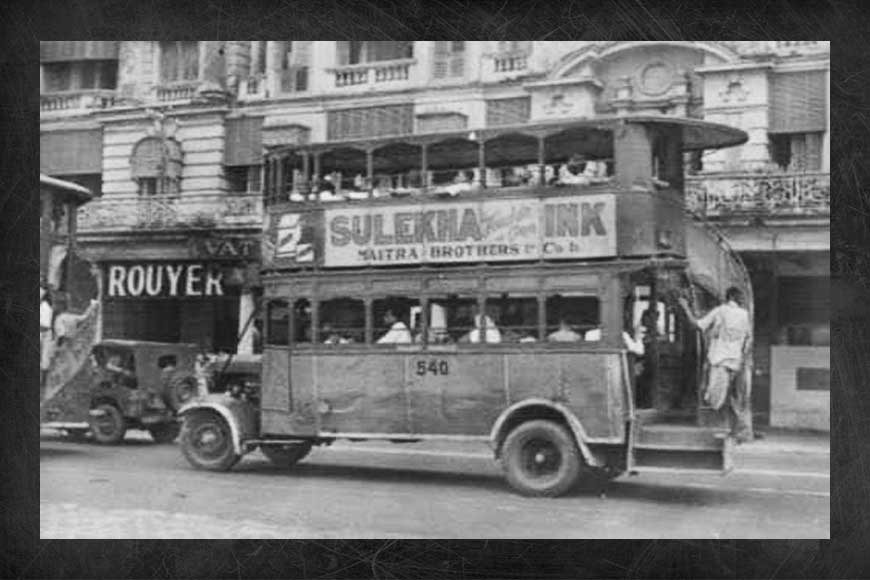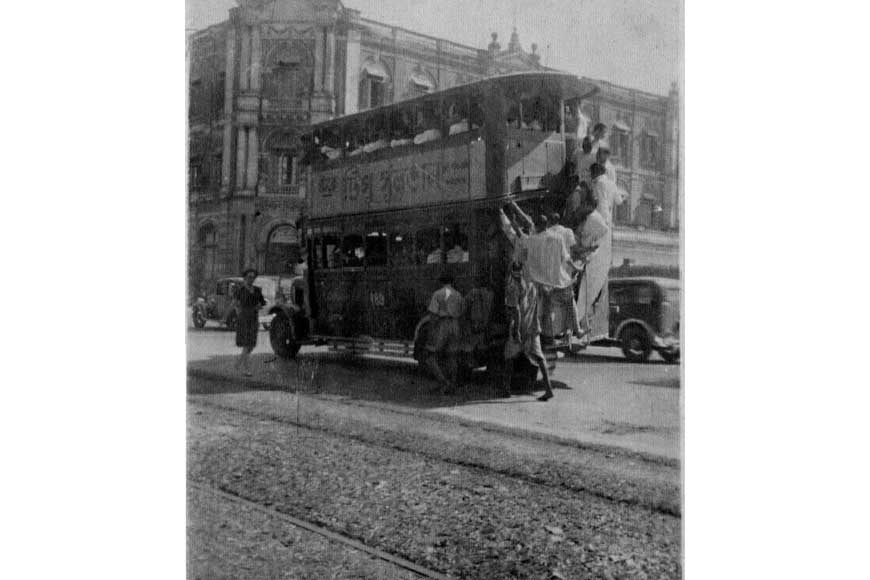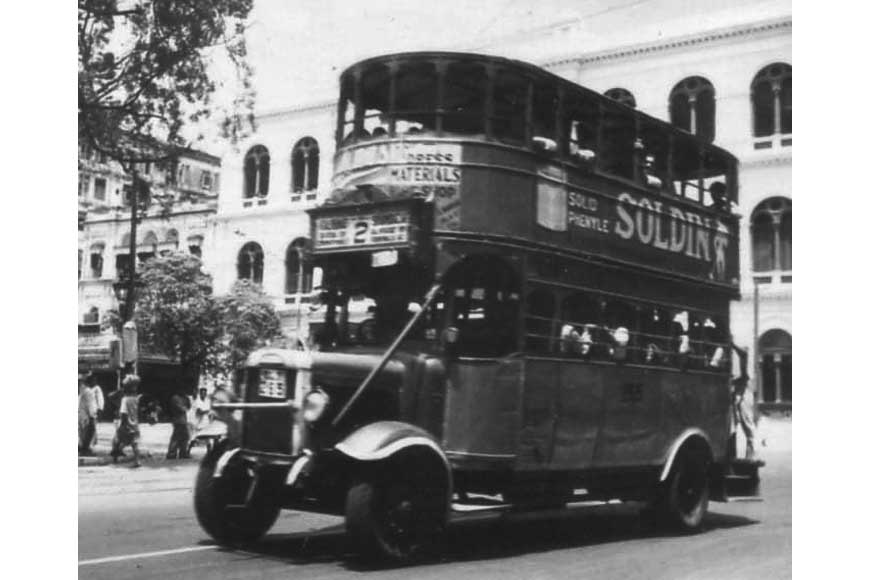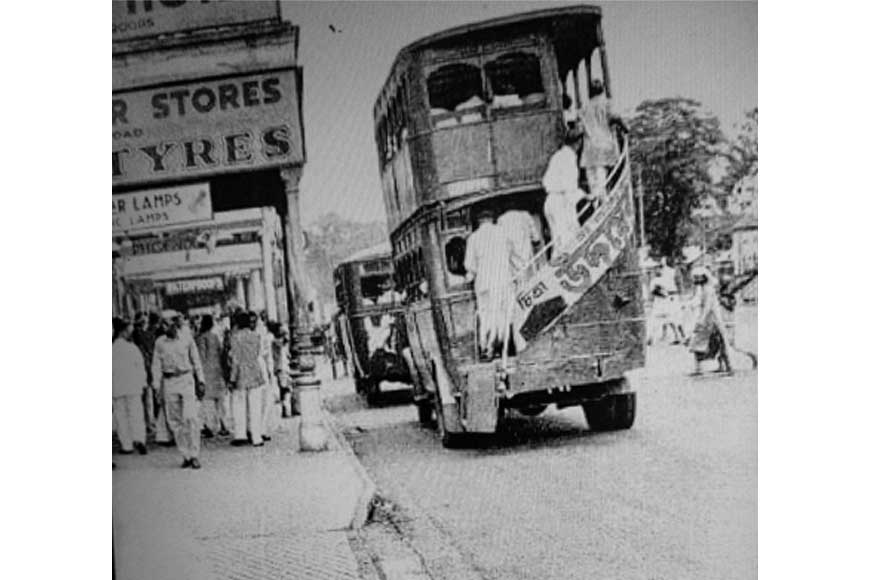Kolkata and its first bus service

April 13, 1919 was a watershed moment in the nation’s history when the tyranny of the British imperialists was exposed. British troops butchered at least 379 unarmed demonstrators meeting at the Jallianwala Bagh. Described as “the darkest stain on British rule in India” and as a “black day in the annals of British India,” it was an act so monstrous and shocking that it sowed the seed for the end of British rule in India. The incident shook the nation. There were strikes, clashes with the police and attack on government buildings. The government responded with brutal repression, seeking to humiliate and terrorize the people. As a mark of protest, Nobel laureate Rabindranath Tagore renounced his knighthood and Mahatma Gandhi launched his non-cooperation movement. Youths came out in large numbers and joined the political arena to set in motion the movement to oust the British Imperial government.
Calcutta too, became a hotbed of protests and armed revolts. Calcutta’s transport system was coming to a grinding halt. The prolonged tram strike further jeopardized matters and government employees were hugely affected as a majority of them failed to reach office on time due to lack of transport facilities. At this juncture, a group of youths stepped forward to look for a solution.
A double decker bus from the 1940s in Kolkata! We hardly had crowds in photos taken then, before population explosion pic.twitter.com/9HM9jwYjmi
— Jawhar Sircar (@jawharsircar) June 23, 2015
A new arrangement was made for passenger transportation by installing wooden benches in goods lorries used for conveying wares of government offices. This unique system was very well received and office babus availed the service every day to report for work on time. Earlier, the Tramways Company had monopoly over surface transport. People were totally dependent on trams for shuttling long distances but whenever tram operations stopped, it affected commuters, bringing everything to a screeching halt. This situation changed quickly after bus service was introduced.

People learnt to stand and wait at designated stops and each time the bus came honking and halted at the stop, people jumped on the wooden plank. However, since the vehicles were mainly used as freight lorries, they were quite high and the elderly and physically challenged people found it difficult to maneuver the height. It was quite a common sight to chance upon obese elderly man trying to find a foothold on the wooden plank with two youths trying hard to pull him up. The earlier version of makeshift bus may have evoked laughter, but the service was godsent for scores of citizens. Those who owned vehicles to transport goods, simply left the business. Tickets for the bus service were printed. Ladders were arranged for the convenience of passengers to board or alight from the bus. In fact, formal permission was taken from the police commissioner himself to run the service.
However, horse-drawn buses had been operating on the streets of Calcutta long before the goods vehicles were given a makeover and introduced as ‘bus.’ Way back in 1830, passenger transport started from Dharmatola to Barrackpore via a carriage driven by three horses but for some curious reason, the arrangement was discontinued shortly after. Meanwhile, the streets of Kolkata were being concretized and cobbled streets were replacing brick ones. This was a major impediment for the movement of horse-drawn cars. Motor cars were used exclusively by the rich and trams catered to the hoi polloi. But it was the strike called by tram employees that transformed the entire transport system for good.
Buses soon became popular and the vehicles went through thorough makeover. Efforts were made to make each vehicle look colourful and attractive. The buses were given fancy names like 'Menaka', 'Urvashi', ‘Pother Bondhu,’ ‘Cholay Esho’ et al. The transport business soon became a highly profitable one, bringing in moolah from its operations. As soon as foreign companies observed this, many quickly joined the fray and Walford & Company stepped in. Its depot was built close to Lalbazar on the east side of Bentinck Street.

The hundred-year history of Kolkata’s buses can be traced back to 1922, when the motorbus, manufactured by Walford & Company, was first introduced to the city by the Calcutta Tramways Company. In 1926, Walford & Company launched the city’s first double-decker bus. The bus initially had a carrying capacity of 56 passengers. Within the first two years of operations, the number of buses was around 50 and then the fleet increased. The inaugural bus route connected Shyambazar in the north, to Kalighat in the south. The first-floor roofs of these buses had no cover and during monsoon people sat with open umbrellas. It used to be quite a sight to watch rows of black umbrellas gliding gracefully in the rains across the city’s major thoroughfare.
❤️ The glorious past ❤️
— Kolkata Bus-O-Pedia (@KolBusoPedia) November 26, 2019
🌐 Double Decker bus 🌐
▶️1944 , Kolkata ◀️
* Collected * https://t.co/ktjkINMZN0 pic.twitter.com/qmOFKfGGNx
Calcutta’s first double-decker bus was made to look exactly like the London’s double-decker bus. It had large drop shutter windows to keep the bus well ventilated and the entire structure of the bus was made of wood to keep the passengers comfortable in Kolkata’s hot and humid summers. The outer body of the bus was made of metal sheets. Gradually the look of the bus was modified and the height and structure of the stairs changed. The bus was a tourist attraction and people visiting the city made it a point to ride on the bus for the unique experience it offered.
Mofussil buses were first introduced from Kolkata at the initiative of a local businessman named A. Sovan. After Independence, the organized Road Transport in Public Sector was given shape on 31st July, 1948 with the creation of State Transport Services under the ‘Directorate of Transportation, Government of West Bengal. At the outset, it started the bus operation on six city routes with a microscopic fleet strength of 25 petrol driven single decker buses. Diesel era started with the addition of two Double Decker buses in 1949-50.

Gradually the structure of State Transport Services turned into a full- fledged organization and spread its network of operation throughout the. On 15th June, 1960, the State Transport Services was christened CSTC (Calcutta State Transport Corporation) with an objective to provide efficient, adequate, economical and properly coordinated passenger bus service particularly in and around Calcutta.
Kolkata’s population has increased phenomenally over the decades and despite extensive road network connecting to regional roads, State Highways and countrywide roads, acute traffic congestion has emerged as a major problem. Although the arterial road network is supportive in handling heavy traffic in the metropolitan area of Kolkata, erratic movement of buses make things very difficult. Yet, buses are still the most preferred mode of transport for the masses, those very buses that were born out of a necessity.











